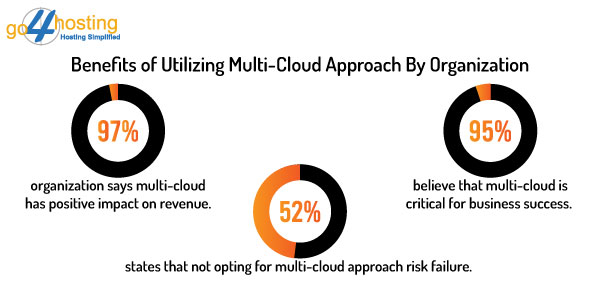Strategic Workload Optimization for Enhanced Multi-Cloud Performance

Contents of Table
Did you know that, as per a VMware report, about 87% of enterprises use two or more clouds? It can be due to a range of reasons from developer preferences to the demand for specific cloud-native service. Needless to say, multi-cloud is the most common and crucial IT structure.
Numerous IT leaders believe that multi-cloud will soon be a norm for large organizations. Although this approach offers a world of benefits, we can’t overlook the complexity of its landscape. The good news is one can easily translate from cloud complexity to cloud coherency with just a few workload optimization techniques.
Centralized Orchestration Tools
Managing workloads across various cloud providers involves navigating diverse infrastructures, services, and operational nuances. Without a centralized approach, organizations may face issues such as resource inefficiency, inconsistent deployment processes, and difficulties in enforcing governance and compliance standards. It is where centralized orchestration tools come to the rescue.
Kubernetes
Kubernetes, often referred to as K8s, stands out as a leading open-source container orchestration platform. Its ability to automate the deployment, scaling, and management of containerized applications is invaluable in a multi-cloud setting. By leveraging Kubernetes, organizations can ensure consistent deployment across various clouds, facilitating seamless workload mobility and resource utilization.
go4hosting’s Kubernetes helps users unify development and operations while building and delivering scalable apps quickly. It offers robust and flexible solutions for optimizing workloads across different cloud environments. By leveraging containerization and automation, you can achieve enhanced performance, scalability and cost efficiency in your cloud infrastructure.
Terraform
Terraform empowers teams to embrace Infrastructure as Code, offering a unified approach to provisioning and managing infrastructure. In the context of multi-cloud, Terraform’s declarative syntax allows for the creation and modification of resources across different cloud providers. It not only ensures consistency but also provides a foundation for efficient workload optimization as infrastructure requirements evolve.
Cloud Management Platforms (CMPs)
Cloud Management Platforms serve as the linchpin in centralized orchestration. It offers a unified interface for managing resources across diverse cloud environments. These platforms, such as AWS Control Tower or Azure Arc, enable organizations to enforce policies, automate workflows, and optimize workloads seamlessly. By consolidating management tasks, CMPs contribute to improved efficiency and cost-effectiveness in a multi-cloud ecosystem.
Standardization and Interoperability

Organizations strive for optimal performance across multiple clouds. Achieving this demands a strategic approach to workload optimization, with a key focus on standardization and interoperability. By doing so, they not only ensure efficient resource utilization but also position themselves to adapt and thrive in the evolving landscape of cloud computing. The path to peak efficiency lies in the seamless integration of diverse workloads facilitated by a commitment to industry standards and interoperable solutions.
Standardization
Standardizing your workload management processes lays the groundwork for seamless interoperability. By adhering to industry standards, organizations can streamline operations and enhance collaboration between different cloud environments. It not only simplifies the integration of diverse workloads but also facilitates the efficient utilization of resources.
Standardization ensures that applications and workloads are designed to function consistently across various cloud providers. This approach minimizes compatibility issues, reduces downtime, and ultimately contributes to a more stable and predictable cloud environment.
Interoperability
Interoperability is the linchpin in achieving a harmonious multi-cloud ecosystem. It enables the fluid movement of workloads between different clouds. Thus allowing organizations to leverage the strengths of each provider without being confined to a single platform.
Strategic workload optimization demands interoperability solutions that transcend the barriers of vendor-specific technologies. APIs, containerization, and orchestration tools become pivotal in creating an environment where workloads can seamlessly migrate, scale, and interact across diverse cloud infrastructures.
Integration of Standardization and interoperability offers a world of benefits:
1. Cost Efficiency
Standardization and interoperability enable organizations to avoid vendor lock-in. Thus promoting healthy competition among cloud service providers and driving down costs.
2. Flexibility and Scalability
A strategically optimized workload is more adaptable to changing business needs. Interoperability empowers organizations to scale resources dynamically. It ensures that workloads perform optimally under varying conditions.
3. Enhanced Reliability
By adhering to standardized practices and leveraging interoperable solutions, the reliability of workloads improves. It translates to reduced downtime and a more resilient IT infrastructure.
4. Risk Mitigation
Standardization mitigates the risks associated with proprietary technologies. Organizations can future-proof their operations by adopting technologies and processes that are widely accepted in the industry.
Risk Management and Compliance
In the ever-evolving multi-cloud environments, achieving peak performance demands more than just technical prowess. A crucial aspect of strategic workload optimization is risk management and compliance.
Strategic workload optimization in a multi-cloud scenario is akin to a delicate balancing act. While efficiency is paramount, organizations must also navigate the intricacies of risk management and compliance to safeguard sensitive data and adhere to regulatory frameworks.
Risk Management
The multi-cloud landscape introduces a spectrum of potential risks, ranging from data breaches to service disruptions. Strategic workload optimization involves identifying and mitigating these risks proactively. It requires a comprehensive risk management strategy that assesses vulnerabilities, anticipates threats, and implements measures to ensure data integrity and confidentiality.
Organizations must adopt a risk-aware mindset, understanding that the distributed nature of multi-cloud environments amplifies the importance of robust risk management practices. Regular audits, threat assessments, and incident response plans become integral components of an effective risk mitigation strategy.
go4hosting’s monitoring and logging tools, coupled with robust threat detection and threat emulation capabilities, form a formidable arsenal for effective risk management. Our monitoring tools deliver real-time visibility into the infrastructure’s performance. Thus enabling prompt identification of anomalies and potential issues. Detailed logs contribute to efficient root cause analysis, aiding administrators in swiftly resolving problems and minimizing downtime.
Advanced threat detection tools analyze user behavior and network activities, flagging unusual patterns or deviations for immediate attention. Security-focused log analysis further enhances threat detection by monitoring logs for suspicious activities or unauthorized access attempts.
go4hosting’s threat emulation involves simulating real-world attack scenarios to identify vulnerabilities. By proactively assessing security posture and conducting security simulations, organizations can patch or mitigate potential weaknesses before they become exploitable.
Compliance
In the era of stringent data protection laws and industry-specific regulations, compliance is non-negotiable. Strategic workload optimization must align with these regulatory frameworks. It ensures that data handling practices meet the required standards.
By standardizing processes and implementing interoperable solutions, organizations can streamline compliance efforts across diverse cloud providers. It not only reduces the burden of adherence but also enhances the organization’s credibility by demonstrating a commitment to regulatory compliance.
| Did you know that go4hosting is HIPPA, SOC1, SOC2 and SOC3 certified? |
The intersection of optimization, risk, and compliance offers
- Proactive Risk Mitigation: Strategic workload optimization involves identifying potential risks and implementing proactive measures to mitigate them. This approach safeguards the organization against unforeseen challenges.
- Regulatory Alignment: By integrating compliance considerations into workload optimization strategies, organizations can navigate the complex regulatory landscape without sacrificing operational efficiency.
- Data Resilience: Optimization efforts must prioritize data resilience. Redundancy, encryption, and secure data transfer mechanisms contribute to a resilient multi-cloud environment. It can withstand unforeseen challenges.
- Continuous Monitoring: Effective optimization requires continuous monitoring of workloads for both performance and compliance. Automated tools and real-time analytics play a crucial role in maintaining this balance.
Dynamic Workload Placement
In dynamic multi-cloud environments, the key to unlocking peak performance lies in strategic workload optimization. Central to this optimization is the art of dynamic workload placement – a sophisticated approach that leverages real-time insights to ensure workloads are precisely positioned for optimal efficiency.
Dynamic workload placement involves the intelligent allocation of workloads across various cloud resources based on real-time conditions, performance metrics, and cost considerations. Unlike static placement, this dynamic approach allows organizations to adapt to changing demands, ensuring that workloads are always situated where they can thrive.
Performance Optimization
Dynamic workload placement enables organizations to capitalize on the strengths of different cloud providers. By analyzing current conditions, workloads can be strategically placed to utilize resources that offer the best performance at any given moment.
Cost Efficiency
Beyond performance, dynamic placement optimizes costs by leveraging cloud resources that are currently the most economical. This adaptive approach ensures that organizations are not only getting the best performance but also the most value for their cloud investment.
Scalability
Workloads are not static entities. They fluctuate in demand and complexity. Dynamic workload placement allows for automatic scaling, ensuring that resources are allocated and deallocated as needed, maintaining optimal performance even during peak usage periods.
Fault Tolerance
Placing workloads dynamically enhances fault tolerance. In the event of a cloud service outage or degradation, workloads can swiftly and automatically migrate to alternative, stable environments, minimizing downtime and ensuring business continuity.
The effectiveness of dynamic workload placement relies on real-time data and analytics. Continuous monitoring of performance metrics, cost trends, and resource availability empowers organizations to make informed decisions on workload placement. Automated tools and intelligent algorithms play a crucial role in this process, ensuring agility and responsiveness.
At go4hosting, we offer our clients a highly scalable cloud environment that adjusts to their unique client needs. We aim to offer you a service that is built for growth at a pocket-friendly price. Our pay-as-you-go model ensures that you only expend the resources you use, ensuring your utmost satisfaction.
My Two Cents

As industries evolve and centre around the cloud, a multi-cloud strategy emerges as the next game plan for many organizations. A VMware report states that about 95% of organizations believe that businesses that don’t adopt a multi-cloud approach risk failure.
Acknowledging that the journey to a multi-cloud environment is challenging, at go4hosting, we are committed to assisting you in navigating the intricacies of multi-cloud heterogeneity. Our focus is on ensuring seamless workload optimization, efficient operations, and robust security across diverse cloud environments.
The era of a single-cloud approach is fading, and a multi-cloud strategy is imperative for staying competitive. Don’t risk stagnation – leverage the power of multi-cloud to enhance flexibility, resilience, and performance.





